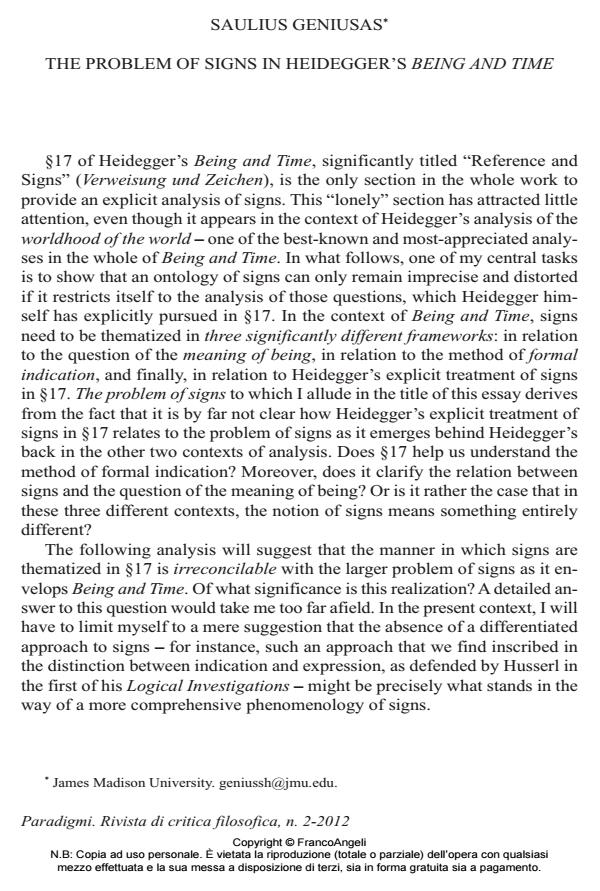The Problem of Signs in Heidegger’s Being and Time
Journal title PARADIGMI
Author/s Saulius Geniusas
Publishing Year 2012 Issue 2012/2
Language English Pages 16 P. 115-130 File size 106 KB
DOI 10.3280/PARA2012-002008
DOI is like a bar code for intellectual property: to have more infomation
click here
Below, you can see the article first page
If you want to buy this article in PDF format, you can do it, following the instructions to buy download credits

FrancoAngeli is member of Publishers International Linking Association, Inc (PILA), a not-for-profit association which run the CrossRef service enabling links to and from online scholarly content.
The author argues that our ontological understanding of signs remains incomplete as long as it is limited to Heidegger’s explicit analysis of signs in Being and Time. Besides focusing on §17 (the only section in this work that addresses signs explicitly), a full-scale evaluation of Heidegger’s ontology of signs must also inquire into (1) the relation between signs and the question of the meaning of Being, as well as (2) the role signs perform on the methodological level of formal indication. The paper’s main thesis will be that Heidegger’s explicit treatment of signs is irreconcilable with how signs emerge as problematic in (1) and (2). This irreconcilability stems from Heidegger’s presumption that non-linguistic signs are paradigmatic of signs in general.
Keywords: Formal indication, Fundamental ontology, Indication, Reference, Signs,Worldhood.
- Making Sense. On the Cluster significatio-intentio in Medieval and “Austrian” Philosophies Laurent Cesalli, Claudio Majolino, in Méthodos /2014
DOI: 10.4000/methodos.4068
Saulius Geniusas, The Problem of Signs in Heidegger’s Being and Time in "PARADIGMI" 2/2012, pp 115-130, DOI: 10.3280/PARA2012-002008